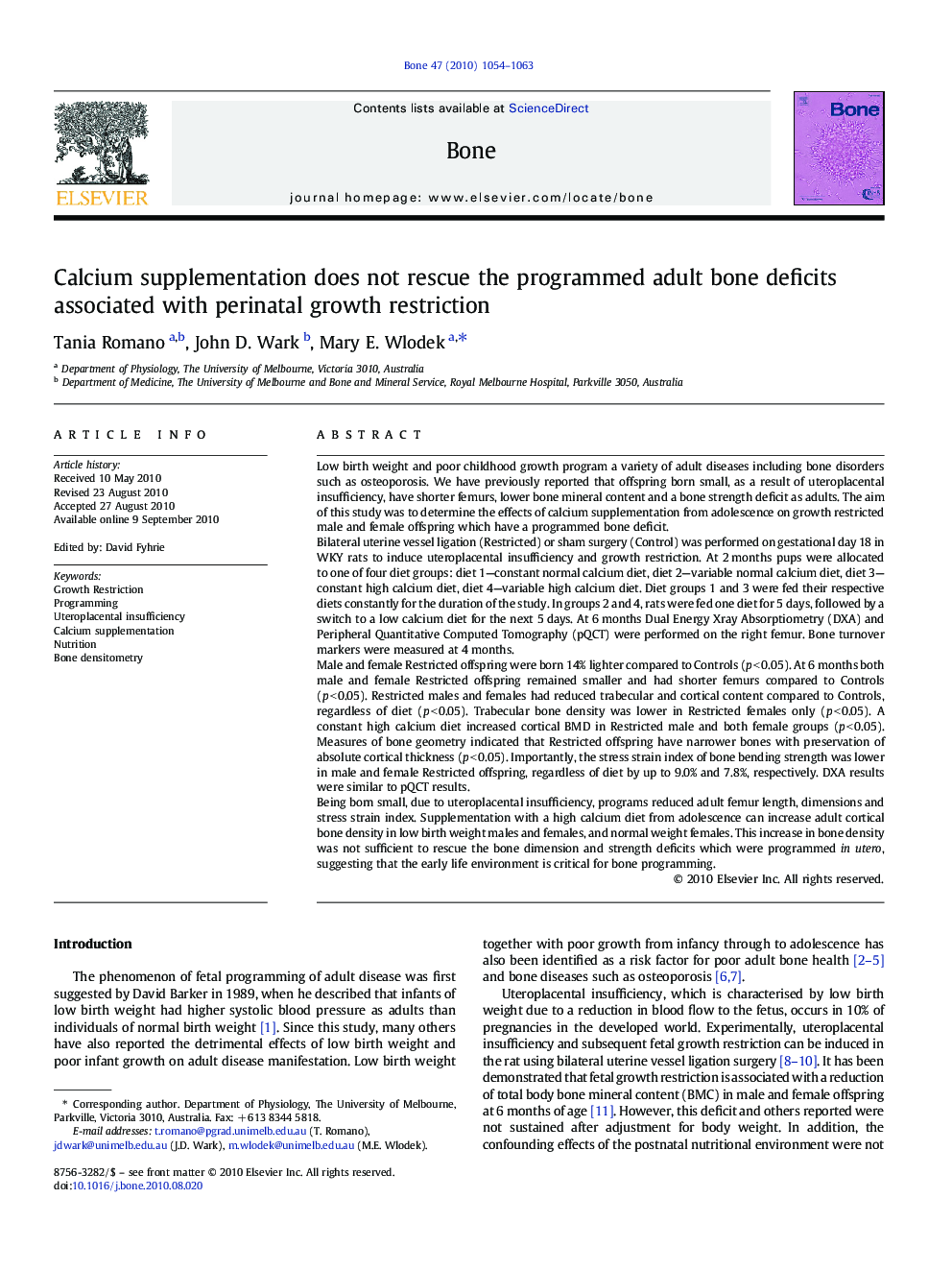| کد مقاله | کد نشریه | سال انتشار | مقاله انگلیسی | نسخه تمام متن |
|---|---|---|---|---|
| 2779691 | 1153282 | 2010 | 10 صفحه PDF | دانلود رایگان |

Low birth weight and poor childhood growth program a variety of adult diseases including bone disorders such as osteoporosis. We have previously reported that offspring born small, as a result of uteroplacental insufficiency, have shorter femurs, lower bone mineral content and a bone strength deficit as adults. The aim of this study was to determine the effects of calcium supplementation from adolescence on growth restricted male and female offspring which have a programmed bone deficit.Bilateral uterine vessel ligation (Restricted) or sham surgery (Control) was performed on gestational day 18 in WKY rats to induce uteroplacental insufficiency and growth restriction. At 2 months pups were allocated to one of four diet groups: diet 1—constant normal calcium diet, diet 2—variable normal calcium diet, diet 3—constant high calcium diet, diet 4—variable high calcium diet. Diet groups 1 and 3 were fed their respective diets constantly for the duration of the study. In groups 2 and 4, rats were fed one diet for 5 days, followed by a switch to a low calcium diet for the next 5 days. At 6 months Dual Energy Xray Absorptiometry (DXA) and Peripheral Quantitative Computed Tomography (pQCT) were performed on the right femur. Bone turnover markers were measured at 4 months.Male and female Restricted offspring were born 14% lighter compared to Controls (p < 0.05). At 6 months both male and female Restricted offspring remained smaller and had shorter femurs compared to Controls (p < 0.05). Restricted males and females had reduced trabecular and cortical content compared to Controls, regardless of diet (p < 0.05). Trabecular bone density was lower in Restricted females only (p < 0.05). A constant high calcium diet increased cortical BMD in Restricted male and both female groups (p < 0.05). Measures of bone geometry indicated that Restricted offspring have narrower bones with preservation of absolute cortical thickness (p < 0.05). Importantly, the stress strain index of bone bending strength was lower in male and female Restricted offspring, regardless of diet by up to 9.0% and 7.8%, respectively. DXA results were similar to pQCT results.Being born small, due to uteroplacental insufficiency, programs reduced adult femur length, dimensions and stress strain index. Supplementation with a high calcium diet from adolescence can increase adult cortical bone density in low birth weight males and females, and normal weight females. This increase in bone density was not sufficient to rescue the bone dimension and strength deficits which were programmed in utero, suggesting that the early life environment is critical for bone programming.
Journal: Bone - Volume 47, Issue 6, December 2010, Pages 1054–1063